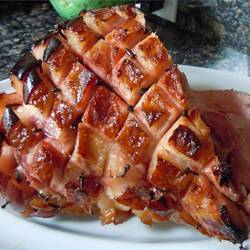Choosing Types of Ham for Christmas Dinner Can Be Intimidating
TEXARKANA, Ark. –
Christmas dinner has grown throughout the years to include Mexican, Italian, or whatever your family is in the mood for. I am still traditional and will be fixing ham for our Christmas meal.
Trying to decide what type of ham to purchase can be intimidating. Will it be a bone in, spiral cut, boneless? There are so many choices.
Hams are marketed in several sizes, the most popular being whole, halves, shank, butt and center-cut slices. Whole hams usually weigh from 8 to 18 pounds. The best buy depends on the amount of money available, family size and preference, and how fast the hams can be utilized.
A ham that is labeled “fully cooked” needs no further cooking, but cooks will often warm it before serving to improve the flavor. If a ham is not labeled with cooking instructions, cook to an internal temperature of 165 degrees.
Butt portion vs. shank, which do you need? The butt portion will cost more per pound and will yield the largest amount of attractive slices. The shank bone is preferred by many for cooking with beans or in making soups, and others prefer the “fully cooked” varieties for ease of preparation and cooking time.
If you are looking at a half ham and it is labeled as such, there are no center slices removed. The shank or butt portions however, have center slices removed and will cost less per pound than the half-ham. Generally, you can estimate that with a bone you will get 3 servings per pound; if it is boneless it will yield 4 servings per pound; while half bone will yield 2 to 2 and one half servings per pound.
While on your shopping trip, you may notice picnic hams. A picnic ham is not actually a ham because it is from the shoulder of the animal instead of from the hind leg. A picnic ham may be sold as a fresh pork roast or one that is cured and smoked. A picnic shoulder will usually cost less than ham and is not as popular because it has more bone and is less tender.
Carefully consider how you will store your ham. Fresh pork should be stored in the coldest part of the refrigerator for two to five days or in the freezer for up to eight months. Pork that is wrapped in plastic wrap from self-service meat counters should be stored no longer than two days in the refrigerator. If it must be kept longer, place the store package in moisture-vapor resistant freezer type packaging material before you store it in your freezer to help prevent freezer burn.
If you have any questions concerning food safety or preparation, please feel free to contact me at the University of Arkansas Division of AG, Cooperative Extension Service, in Miller County at 870 779-3609, or e-mail me at chadley@uada.edu. Follow me on facebook at UAEXMillerCountyFCS/CarlaHaleyHadley, and twitter at @MillerCountyFCS for additional recipes and tips.
We will be having this recipe for Brown Sugar and Pineapple Glazed Ham for our Christmas meal. It is my kids’ favorite.
Brown Sugar and Pineapple Glazed Ham
6-8 pound fully cooked bone-in ham
Whole cloves, optional
1 cup brown sugar
1 tablespoon cornstarch
2 teaspoons prepared mustard
1 (15-ounce) can pineapple slices, juices reserved
1 (4-ounce) jar maraschino cherries, drained
Place ham, fat side up, on a rack in a shallow roasting pan. Insert meat thermometer through the end of the ham so tip is in the center of thickest part of the ham but does not touch bone or fat.
Roast 12 to 16 minutes per pound in a 325 degrees oven or until thermometer reads 165 degrees. Remove ham from oven. Pour drippings from pan and remove any skin from ham.
Cut top of ham lightly in uniform diamond shapes; insert whole cloves in each diamond (optional). Lay pineapple slices and cherries on top of ham. Drizzle half of pineapple glaze on ham. Roast uncovered about 20 minutes; add remaining glaze and roast 10 minutes more. Cover ham with a tent of aluminum foil and let stand for 10 minutes.
For Glaze: In a medium saucepan, combine brown sugar, cornstarch, reserved pineapple juice and prepared mustard. Heat to a boil, and continue to cook until the mixture has boiled for 1 minute.
Check out our Ham for the Holidays newsletter for more information and recipes.
By Carla Haley-Hadley
County Extension Agent - FCS
The Cooperative Extension Service
U of A System Division of Agriculture
Media Contact: Carla Haley-Hadley
County Extension Agent - FCS
U of A Division of Agriculture
Cooperative Extension Service
400 Laurel Street, Suite 215 Texarkana AR 71854
(870) 779-3609
chaley@uada.edu
The Arkansas Cooperative Extension Service is an equal opportunity/equal access/affirmative
action institution. If you require a reasonable accommodation to participate or need
materials in another format, please contact your County Extension office (or other
appropriate office) as soon as possible. Dial 711 for Arkansas Relay.
The Arkansas Cooperative Extension Service offers its programs to all eligible persons
regardless of race, color, sex, gender identity, sexual orientation, national origin,
religion, age, disability, marital or veteran status, genetic information, or any
other legally protected status, and is an Affirmative Action/Equal Opportunity Employer.
